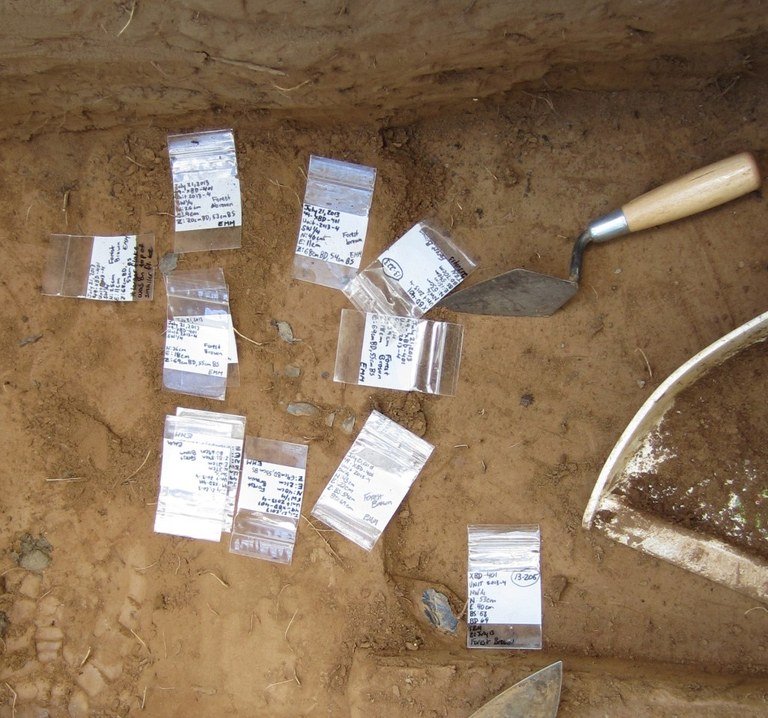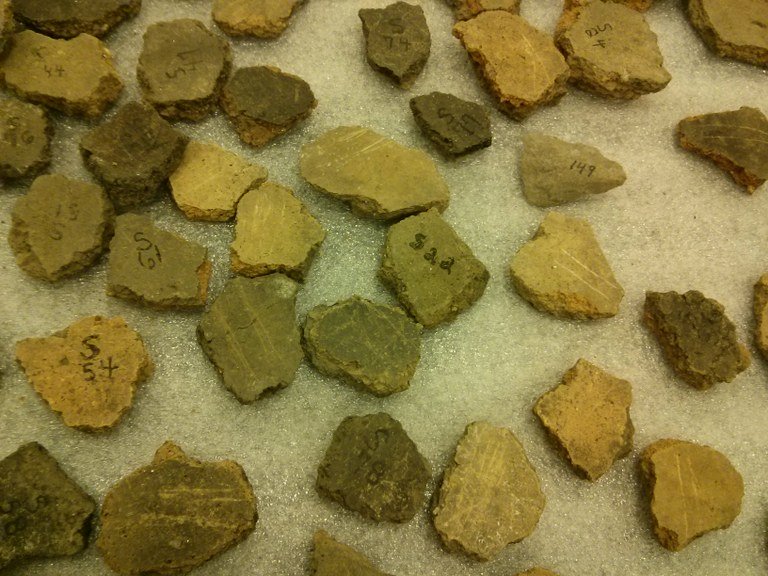The Archaeology of Archaeology
If there’s one thing archaeologists are good at, it’s gleaning as much knowledge as possible from the tiniest scraps of information. Today, archaeologists make a point of festooning their collections with all of this hard won data so that future generations won’t have to – er – dig for it quite as vigorously as they did. Details about which unit of a site an artifact comes from, how deep in the soil it was, the date it was excavated, and who found it only make up a portion of all the information compiled by most archaeologists working today. We call this “provenience," and it is crucial to forming an accurate understanding of the artifact, the site where it was found, and the people who created it. Some researchers even go to the trouble of recording the precise GPS coordinates of each artifact as it is discovered in the unit.
Jun 06, 2015
If there’s one thing archaeologists are good at, it’s gleaning as much knowledge as possible from the tiniest scraps of information. Today, archaeologists make a point of festooning their collections with all of this hard won data so that future generations won’t have to – er – dig for it quite as vigorously as they did. Details about which unit of a site an artifact comes from, how deep in the soil it was, the date it was excavated, and who found it only make up a portion of all the information compiled by most archaeologists working today. We call this “provenience," and it is crucial to forming an accurate understanding of the artifact, the site where it was found, and the people who created it. Some researchers even go to the trouble of recording the precise GPS coordinates of each artifact as it is discovered in the unit.

Artifacts waiting to have their GPS coordinates recorded after having been bagged and documented.
However, this was not always the case. While modern researchers tend to view artifacts as data most useful when compiled into a large body, early archaeologists were much more focused on the individual objects – an approach which meant large collections with very little information attached to them. This mentality was reflected in the museums of the time, in which allowing the artifacts to “speak for themselves” and providing little to no contextual information was often common practice.
Even today, when we try our hardest to write down every detail of an artifact’s context, artifacts sometimes become separated from their documentation over time. In the world of collections we call this “dissociation” and for those who take care of collections it is about as popular as the plague. Beyond this, the kind of information we record is always inextricably guided by the questions we ask and, further, by the amount of time and resources available for answering those questions. No matter how meticulous we think we are being in our documentation and analysis, it is almost inevitable that archaeologists of the future will heave a few heavy sighs over the questions we never knew to ask.
At Sustainable Archaeology, the majority of our material is from legacy collections, meaning it was excavated and collected by archaeologists who are no longer practicing and have left their collections under our supervision. Many of these consist of excavations which took place in the 1970’s, 1930’s, and some as early as 1910. As you can imagine, with such a wide range of dates and researchers, the quantity and style of provenience information is extremely diverse. From well-documented sites which come complete with maps and artifact catalogues to mysterious boxes packed with unlabeled artifacts and cryptic notes jotted on scraps of disintegrating paper, we’ve really got it all. At times it seems like telepathy would come in handy when trying to reconstruct the provenience of these collections.

Sorting out a bag of potsherds: these sherds were labelled using multiple different numbering systems (some not labelled at all) and very few of them feature information about provenience within the site.
So how can we reconnect these collections with the information that gives them meaning? While the lack of provenience information certainly makes it more difficult to understand certain artifacts, all is not lost. In truth, it’s a slow process and usually a difficult one, but it’s also a process that bears a lot of resemblance to archaeology itself. As we hunt through archival documents, decipher code-like record-keeping styles, and try to retrace the movement of artifacts through time we’re using many of the same empathetic skills as archaeologists do when attempting to envision what techniques were used in the creation of an artifact and what the influencing factors were that lead to those choices. In short, Sustainable Archaeology specializes in the archaeology of archaeological collections. Unlike archaeologists, however, we are sometimes able to draw on living people with knowledge about the collections. Many of the collections without provenience have one or two tantalizing clues attached to them – a name maybe, or a date – and while archaeology is certainly a growing field, the community remains small enough that we maintain some hope of stumbling across people with memories related to those clues. With that hope in mind, we’ll be posting about our archaeological mysteries from time to time and we encourage anyone who thinks they might be able to contribute information to contact us or comment on these posts.
Originally posted by Emily Meikle, 20150603